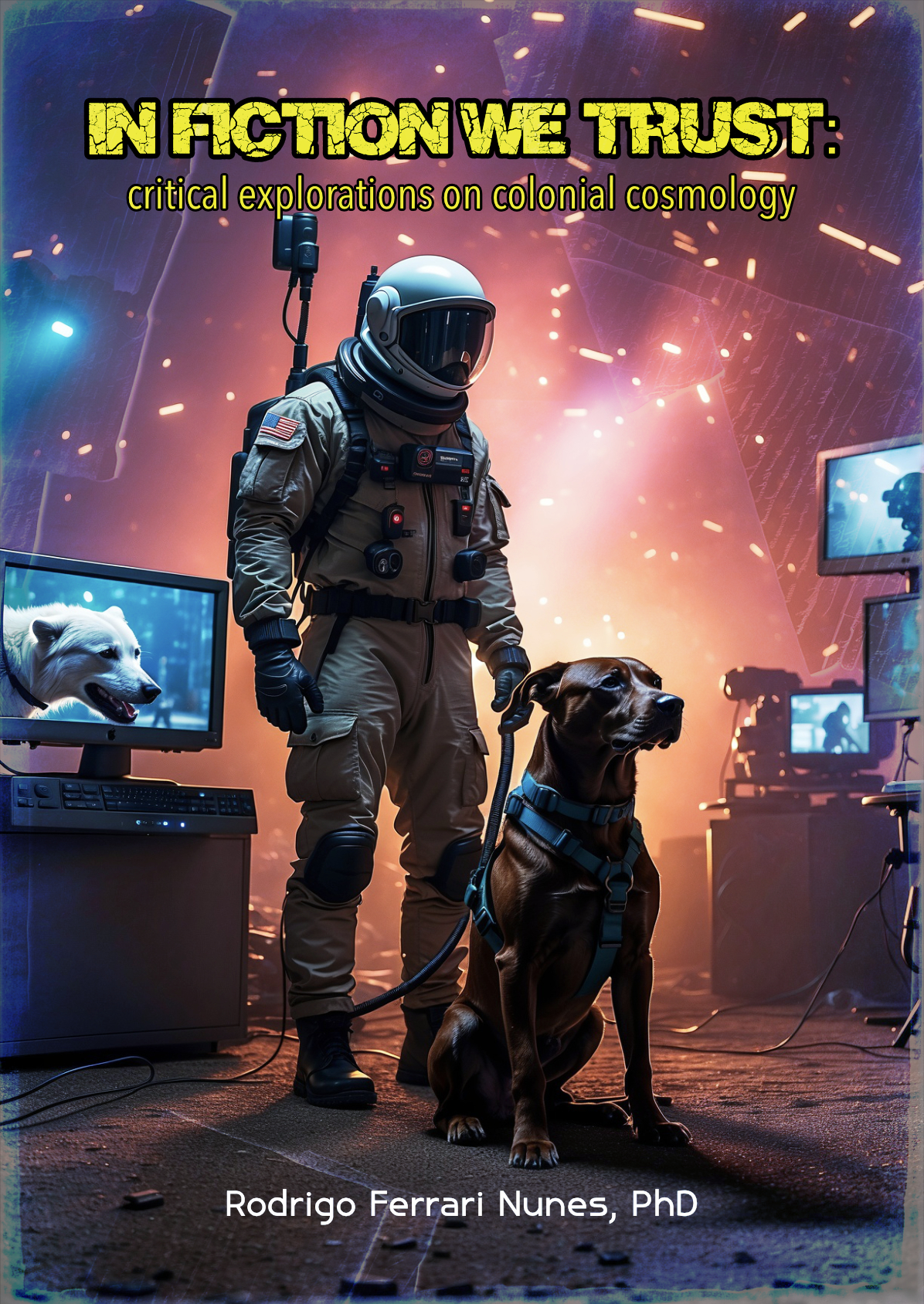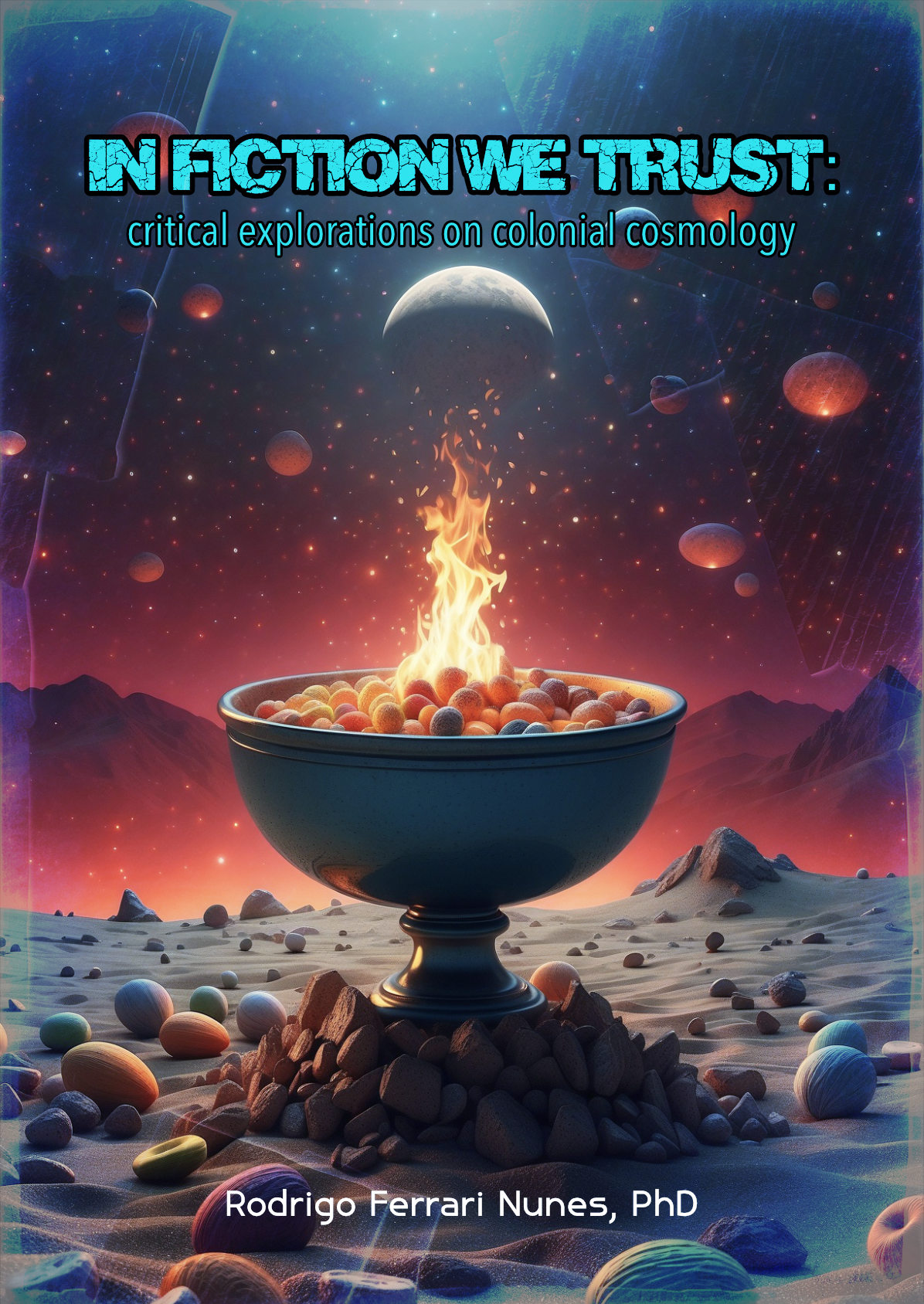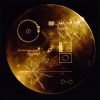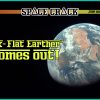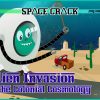
SIMULATED PERCEPTIONS
Cognitive dissonance, strong emotions, zeal and indignation, compel many websites and YouTube channels to claim they have debunked many of what they call ‘flat earth misconceptions’. By this, they mean alleged mistakes that most so-called flat earthers make. Negative stereotypes and official cosmic lore inspire their impassioned arguments. They often present cartoons alongside untested and unquestionable theories as scientifically proven models of reality. As we noted earlier, they believe that only one monolithic science exists, bound fast to the colonial globe. Their minds are caged in conundrums. Their logical mistakes are patterned in similar ways, dependent on emotions locked into their notion of science and authority.
Let us consider some examples. Under colonial cosmological control, people are discouraged from making experiments that measure the environment. The spherical Earth’s alleged curvature should hardly be in contention, as it should be relatively easy for anyone to measure and verify. That is at least what people who never tried to measure it believe. Natural images, without controversy, prove that we can see much farther than it should be possible according to the colonial premise. This conclusion can be tested anywhere, always with the same results. For believers, however, official animations have become unquestionable lore. No matter how high you go, the horizon rises to eye level regardless, which should not be possible on a spherical Earth. Believers look at videos that are distorted by ultra wide-angle lenses, that show the same curvature regardless of altitude, and count that as proof for the colonial paradigm. Thus, their perception has been colonized with assumptions they accept unwittingly.
Inspired by fanatic conviction, avid debunkers even resort to sketchy simulations as proof. Relying on cartoons is a very typical among those who incorporate the colonial model. For instance, the authors of a website called Debunking Flat Earth Misconceptions present as their proof of the Earth’s sphericity another website that provides a cartoonish, simulated view of the Earth.1 Typically, they believe simulations are more important than verifiable measurements and observations made out in the natural world. Yet, there are glaring issues with the cartoonish simulation they rely on. It does not include settings for refraction due to air and humidity, camera and lens settings, and other features commonly used in more accurate computer simulations.2 Believers, trained to passively accept cartoonish looking two-dimensional sketches and mathematical formulae as scientific proof, seem unable to compute that verifiable evidence that could be considered proof come from meticulous observations in natural settings. In this case, what matters for them is that most people simply believe the official narrative, so it must be true. Space exploration stories that glorify the State and its actors are passed on without any public scrutiny.
As Wernher Von Braun himself suggested in an article at Collier’s magazine, a space station moving at multiple times the speed of sound should seem static to its crew. Von Braun invented this proposition without any experimental evidence. Such a fiction is essential for making the public accept that something that moves at 23 times the speed of sound should seem as still as what experience inside a swimming pool. By admitting that astronauts train for spacewalks in swimming pools, NASA promotes an inversion of actual physics, that is, the notion that being immersed in dense and still medium is the same as moving supersonically in a vacuum. As such, space fictions serve as strategies for normalizing the impossible.
PROPORTION: THE EARTH AND THE MOON
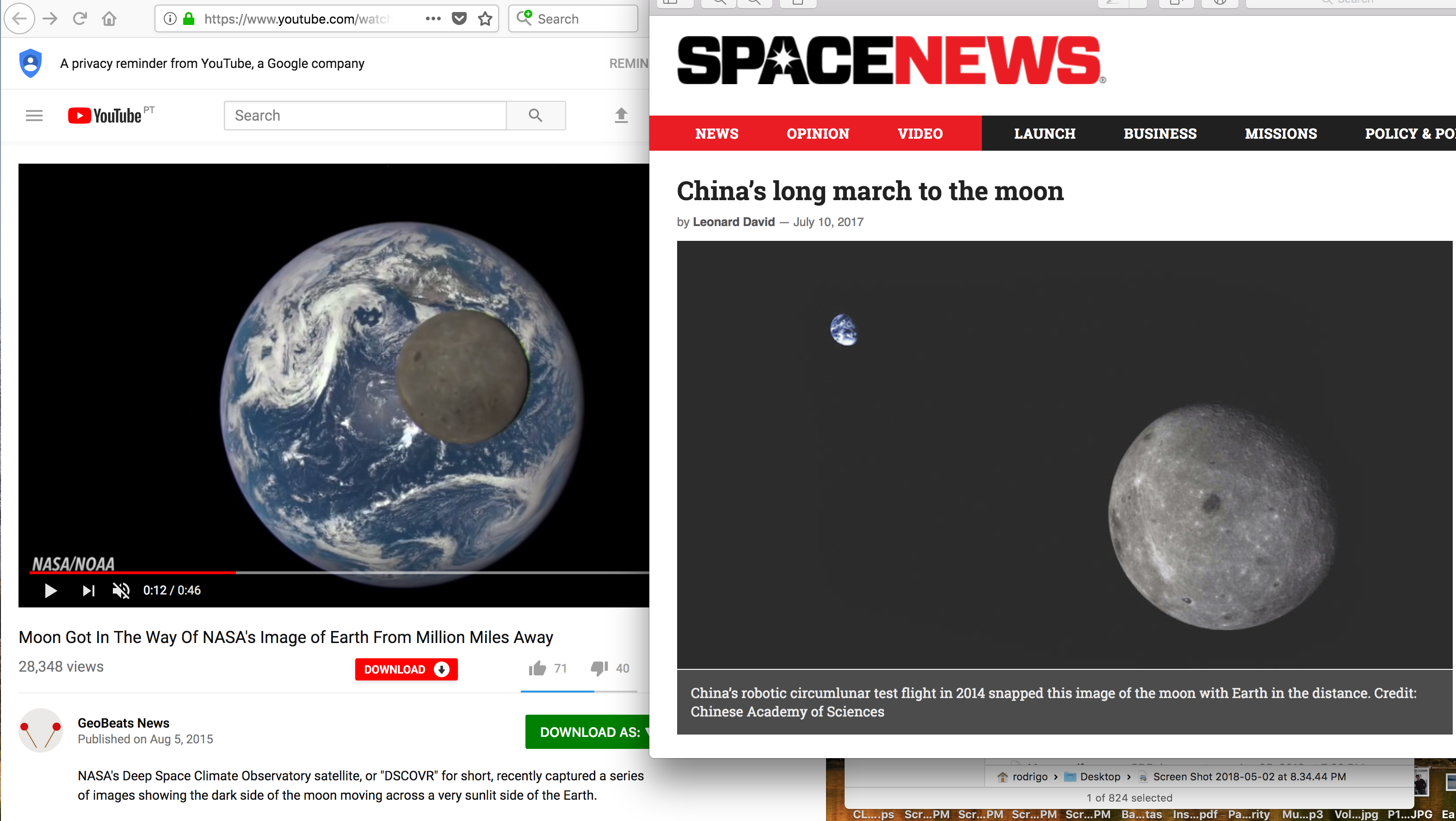
Next, Let us consider the amazing example of the unnatural and contradictory proportions shown in the cartoonish images that purport to show the Earth and the Moon together in space. If these were natural images from real objects, the results should be consistent and proportional. However, the Earth and the Moon appear in a wide variety of inconsistent proportions that have never matched. The relative proportional appearance among two bodies, as a function of their size and distance in relation to the location of the camera, should confirm their actual sizes and distances. In the colonial model, the distance between the Earth and the Moon is not supposed to change. Yet, like many other alleged astronomical measurements, the official distance between the Earth and the Moon only changes historically, according to who claims to have measured it. As we can see clearly in the two official images above, they could not be part of the same reality.
On the left, we see a massive Earth and a small Moon allegedly photographed from a round million miles away. Obviously, as we move closer to the Moon, according to the reality proposed in the image, the Earth would become enormous. On the right, the official Chinese version presents a massive Moon with a tiny Earth. These computer generated images are both cartoonish and unnatural, comically impossible, and clearly disproportional. For the believer, however, they must be true. They would never in a million years ever question the State’s official cosmic narrative, despite the fact that the images disprove themselves. In any case, if the images were natural, the results would be always proportional. Various nonsensical variations of the proportion of the Earth and Moon have been published, resulting in completely discombobulated sets. It is painfully obvious that they are not natural images. In a court of law, space believers would be humiliated by their own data alone, which falls apart under undogmatic scientific scrutiny. Yet, somehow, and magically so, those who dare to point out the obvious in public risk their own socioeconomic stability due to ignorant prejudice alone.
SHUTTLE TROUBLE
Many people were convinced that the so-called Space Shuttles were viable vehicles. Despite the fact that the shuttle’s aerodynamic design was so atrocious it could never have reached the alleged 23 times the speed of sound, people still believed it. The launch footage has never shown the purported ridiculous speeds. Believers were persuaded to watch the loud fireworks; as the shuttle disappeared in the horizon, they thought it reached Earth’s orbit. Meanwhile, far better designed and aerodynamic jet and stealth fighters would start falling apart at around 3 times the speed of sound. Believers never caught on to the obvious contradiction here. They think a person can be accelerated on top of a ballistic missile and survive due to magical, hand sewn garments and fictional technologies. What really matters for them is whether NASA said so. The agency’s assertions are, for believers, always beyond any scrutiny. Amazing what the power of fictional authority is alone able to achieve.
To anyone who closely examines the official footage still available, it seems impossible that people still believe that NASA’s many old and comically outdated videos stand for evidence of a legitimate history of space exploration. The material is so riddled with inconsistencies that proving them deceptive is not much of a challenge. Some videos presented to the public as being from space are clearly just animations. As it turns out, despite how believers may rant and rave, most videos ever produced in space are composites and animations. The few exceptions, such as footage of American astronauts hopping around on the Moon, were clearly produced on the Earth using a variety of techniques that have been exposed by different analysts over and over, despite the barrage of propaganda unleashed again and again on the population.
Let us consider a video that shows the Space Shuttle mission 112, from 2002.4
This video is still available at archive.org as of this date, but its NASA source has been recently sanitized. When we search official NASA websites for the STS-112 mission, we find that NASA only makes two short videos available, to the exclusion of any space footage.5 NASA websites no longer make Space Shuttle videos available; instead, they provide an outdated archives page replete with broken links.6 Should they not be proud of the history of space exploration and want these materials to be available in perpetuity? Given how embarrassing these videos are, the answer is obviously no. It is clear that the Ministry of Truth went back and got rid of the stuff that looks more ridiculous, and made sure that the silly stories astronauts tell about their Space Shuttle missions remained available.7
Whereas videos from Space Shuttle missions are not easy to find, NASA’s spaceflight website, which originally published them, is still available as multiple back-ups archived at the WayBackMachine service.8 On archive.org, the STS-112 video still features part of its original caption, linked to the now discontinued spaceflight website:
In this video captured by an Expedition crewmember aboard the International Space Station, Space Shuttle Atlantis makes its approach to dock with the station.
Nothing in the video seems natural. The shuttle itself looks like a hand-drawn prop. Moreover, such a clip makes no sense. Why isn’t this video longer than one minute and thirteen-seconds? What is its purpose? How was it filmed from the International Space Station? No greater contextual details are provided, a typical feature of NASA productions.
MAKING THE INVISIBLE VISIBLE
Other curiosities and marvels emerge from a close study of official space exploration videos: as production techniques change overtime, celestial objects and their appearances change along with them. This is exactly what we see looking at the evolution of Hollywood productions and special effect techniques. For instance, the official images presented as being from the surfaces of Venus and Mars are simply tinted images taken in desert landscapes in remote locations on the Earth. Jupiter, according to the Voyager missions and its animations, was portrayed with various different appearances.3 More recently, due to the so-called Cassini mission, Jupiter resembles clean computer generated images, presented in various contradicting color combinations. For believers, such color variations reflect science, and the alleged spectra that they think are being collected. Yet, the same results can be achieved by playing with Photoshop editing tools.
After Hubble’s so-called Deep Field images, people started to expect and accept copy and paste star textures, blurry galaxies, illuminated smoke and dust, in a wide ranging variety of colors. Acceptance of Hubble’s view of the universe stems from the acceptance of the incredible, some would say ridiculous, notion that space-based telescopes can take long exposures of unverifiable tiny dark spots in the sky while moving, along with the Earth, in multiple directions at the same time. This is another tough point for believers, who are usually unable to compute the dogmas of the heliocentric solar system alongside an expanding universe, various orbits and speeds, magically held together by the one-size-fits-all Newtonian gravitational force. Anyone should be able to appreciate how the Earth has changed alongside NASA production techniques over the years just by comparing the material available. During STS-85, in 1997, the Earth looked like this:9
Looking at how historical images of the Earth from space have changed according to the animation techniques and the technologies of each period is the easiest way to prove the images are simply unnatural, studio productions. The keys are in the details. For instance, until the time the images above were produced, the Earth had no atmospheric layers. In later computer animations, the new sodium layer started appearing. Space Shuttle era ISS images also portray a pitch black Earth at night whereas new ones feature bright city lights everywhere.
NASA promoted an animation series as astronaut’s Don Pettit’s new generation of Space Station images of the Earth. According to the official lore, astronauts are busy documenting the Earth, as they fly by at 17,500 miles an hour. They are always worried about the environment, and play a key role in the unstoppable progress of science.
Keeping in line with the slogan making the impossible possible, Don Pettit’s presentation of the updated computer-animated simulations of the Earth from the ISS, is called Making the Invisible Visible.10 These simulations depict seemingly common cut-and-paste electric storms that were never seen before, and star trails that do not blur or merge, despite the alleged orbit of the station, falling around the Earth.
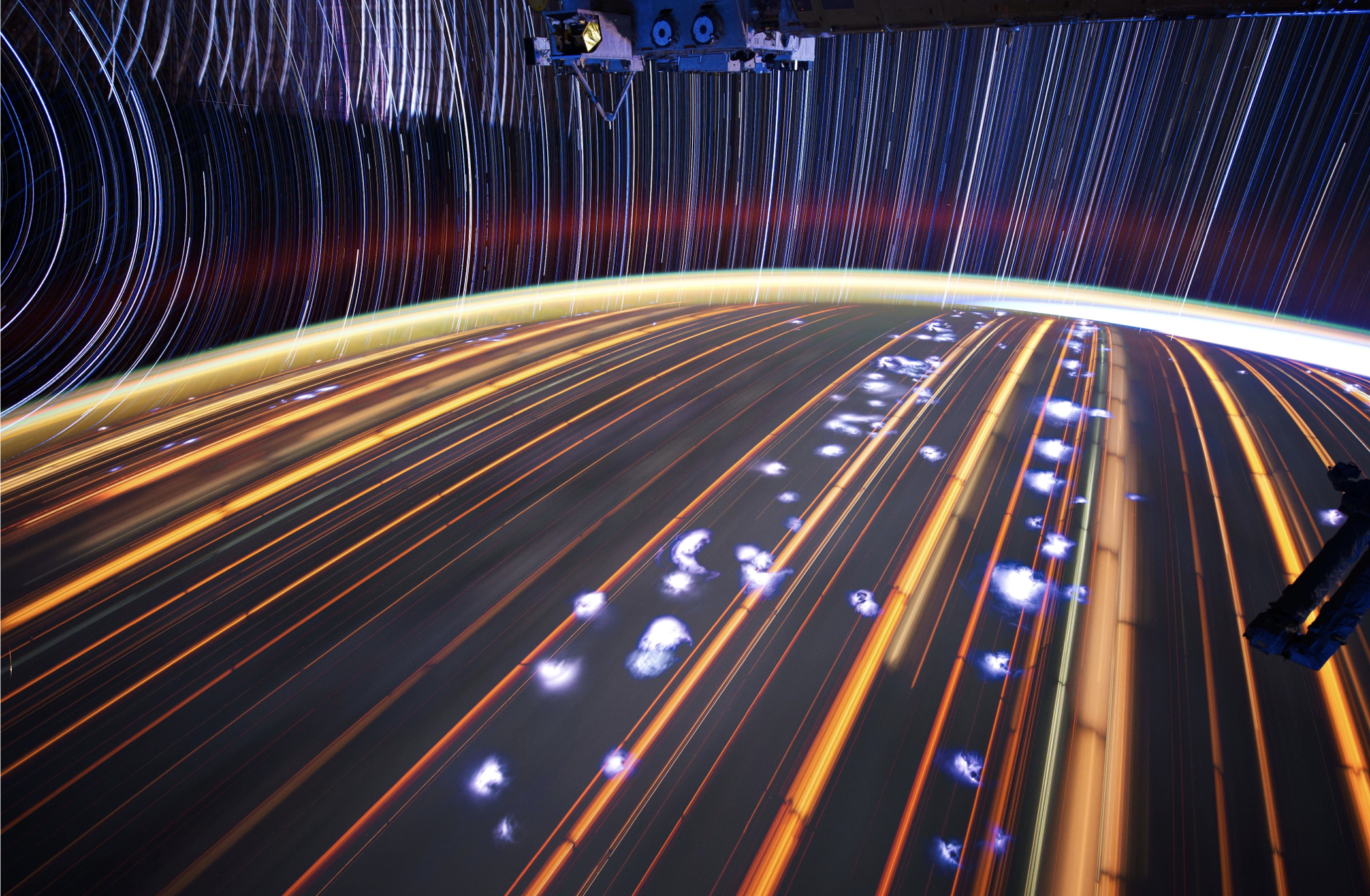 This frame comes from Don Pettit’s version of the Earth from the ISS. Here, the impossible is rubbed onto the audience’s faces — star trails that look just how they do in ground photography appearing alongside cut-and-paste, cookie-cutter electric storms. If the ISS moves at 17,500 miles an hour, as advertised, and goes around the Earth around 16 times per day, while the Earth itself moves around the Sun and spins, how can star trails that do not scramble be captured? Again, deprived from a geometrical imagination, most people are at a loss when such a question is posed.
This frame comes from Don Pettit’s version of the Earth from the ISS. Here, the impossible is rubbed onto the audience’s faces — star trails that look just how they do in ground photography appearing alongside cut-and-paste, cookie-cutter electric storms. If the ISS moves at 17,500 miles an hour, as advertised, and goes around the Earth around 16 times per day, while the Earth itself moves around the Sun and spins, how can star trails that do not scramble be captured? Again, deprived from a geometrical imagination, most people are at a loss when such a question is posed.
Time-lapse photography on the ground shows circular star trails that do not cross one another. This is already quite an enigma for the colonial cosmology. Yet, the official explanation is that the Earth’s spinning motion produces the star trails. Thus, how can the same star trails appear in ISS time-lapse photography, if the ISS is falling around the Earth at 17,500 miles an hour? The answer is simple and clear — it is not possible, and it would never look like this if it were possible. As an excuse, Don Pettit claims he used a contraption that somehow moved along with the stars in order to collect this time-lapse. Magically, the gadget’s rotation did not affect the Earth below, only the star trails, which even made their way through the atmosphere and the sodium layer. The yellow-red stripes are supposed to be city lights. This image also portrays a yellow sodium layer, and beyond it, a mysterious red glow that looms above the exaggerated curve, as seen from a mere 400 kilometres above the 40,000 kilometer-wide circumference of the ball Earth. The stories and models that seem to support the colonial cosmology do not have to be consistent. As far as space programming is concerned, the more inconsistent, flashy, and paradoxical, the greater the impact.
FLIP MANEUVER
NASA went out of its way to give an impression that Space Shuttle missions were very exciting scientific discovery and exploration affairs. The material, however, is repetitive and hyperbolic. Producers continued trying to make it seem exciting. One early attempt was to hype the Space Shuttle’s flip maneuver.11 The animation that NASA produced was atrocious even for the production standards of the time, years after The Matrix (1999) came out. Space believers, NASA seems to insist, could never tell the difference between fiction and reality. They would latch on to anything officials tell them. The quality of the video is quite poor, and the animation looks as unrealistic as possible. This approach keep the images in line with the quality of what was allegedly produced on the Moon set during the Apollo missions. Also worth mentioning is the tradition of fictional gadget names and acronyms that NASA promotes. Some of them can be quite revealing. For instance, the Space Station Remote Manipulator System.12 In fact, the International Space Station is nothing more than a remote manipulation system. The state’s cosmological stories work like remote controls that set the limits for what the population can perceive.
These examples can be multiplied ad infinitum, and their inconsistencies can be catalogued, compared and explained, but the conclusion is always the same: these are animations and productions, not real space footage as presented to the public. It does not matter how many videos one can amass or how many NASA can hide and try to update, or provide only in very low resolutions. A comparative study of the footage available invariably leads to the same conclusion, exposing the production techniques used, and highlighting the history of production techniques used to bamboozle the public with the cosmology of the state and its many fictional elements. Ultimately, proving NASA images are not natural is like proving that cartoons are not found in nature. We should not be surprised, as it could not be otherwise. All such productions can be explained and back-engineered.
POOL WEIGHTS
Let us now look at the alleged spacewalks astronauts conduct. Since these are produced inside specially prepared swimming pools, there are always clear signs that the actors are underwater. For example, many analysts have spotted particles and air bubbles that move underwater just as expected in such a medium, which would make no sense whatsoever in the so-called vacuum of space. Yet, even more telling is the fact that astronauts are linked to underwater weights, so that, regardless of the orientation of the camera, which could be flipped upside down or sideways, the weights pull to the direction that is actually down in the underwater film set. As with every other case, there are hundreds of examples to choose from and that corroborate the same conclusion.13
Over the years, NASA did not let go of the embarrassing weights, while believers seem unable to realize that the weights are used to keep the divers stable underwater. In addition, a weight makes no sense whatsoever in a so-called weightless, so-called zero-gravity or microgravity environment. Moreover, we can only actually feel like we are floating, or weightless, underwater, that is, in a dense medium that has nothing to do whatsoever with the fictional vacuum of space.
As Wernher Von Braun himself wrote in an article at Collier’s magazine, the early space exploration stories included the suggestion that something that moves multiple times the speed of sound should seem static to its crew. Von Braun invented this proposition without any experimental evidence. Such a fiction is essential for making the public accept that something that moves at 23 times the speed of sound should seem as still as what experience inside a swimming pool. By admitting that astronauts train for spacewalks in swimming pools, NASA promotes an inversion of actual physics, that is, the notion that being immersed in dense and still medium is the same as moving supersonically in a vacuum. As such, space fictions serve as strategies for normalizing the impossible.
NOTES
2 This webpage provides an interesting example: https://flatearth.ws/auguste-piccard
3 I review the Voyager material here: https://rodrigoferrarinunes.com/the-voyager-miracle/
4 https://archive.org/details/HSF-mov-sts112fd03b – A copy is also available at: https://youtu.be/nTzd6MYTfhg?si=CQTvUf-hGmj4DWCQ
5 https://nasasearch.nasa.gov/search/news?affiliate=nasa&channel=704&query=%22STS-112%22&sort_by=r
6 https://www.nasa.gov/mission_pages/shuttle/shuttlemissions/list_2002.html
7 I analyze various inconsistencies and issues that appear in the stories Terry Virts, a minor Space Shuttle astronaut, still tells. https://www.youtube.com/live/9OiWlMP8b38?si=0YyPOYoRya-3G1aq&t=6559. Pathetically, Virts makes himself available as a cameo actor who can make a video for your cousin’s birthday for a fee: https://www.cameo.com/astroterry.
9 Original source: https://archive.org/details/HSF-mov-sts85fdh08-2
10 Pettit’s presentation is available online. https://vimeo.com/61083440. On April 2021, I made a two part live analysis of Pettit’s presentation: Part 1: https://youtu.be/x7_roPOwMno; Part 2: https://youtu.be/R9tseFMB5Qg.
11 As mentioned before, some of the archival footage from NASA’s Space Shuttle Missions, or STS, are hard to come across and are not promoted in their current websites. Thus, we have to resort to the backups that are available on thewaybackmachine.org:
I have also made this historical video available on YouTube: https://youtu.be/ef13UbgsE1M
13 Original link: https://web.archive.org/web/20051212094742/http://spaceflight.nasa.gov/gallery/video/shuttle/sts-114/html/fd5.html. I also published a copy of this video on YouTube: https://youtu.be/_wg3L7CYDXE



